Visa vs American Express – Know the difference in business model

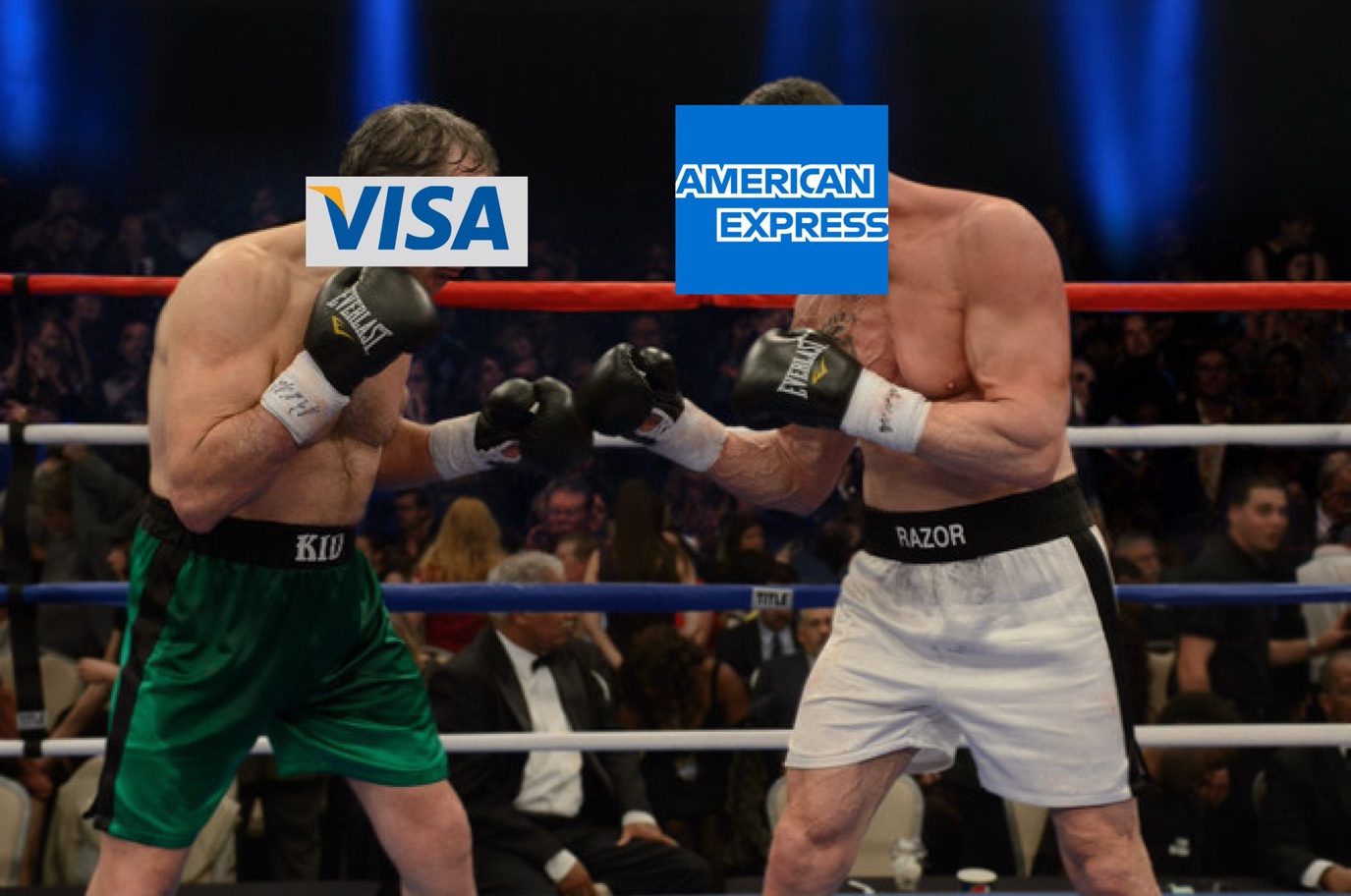
Introduction
Credit cards are one of the most common types of payment methods. It works just like a debit card but with one key difference. Credit cards allow you to borrow money from the card issuer up to a certain limit to purchase items or withdraw cash.
Visa and American Express are two major players in the global credit card market. While Visa has a market share of 52.6%, American Express (Amex) has 19.6% of the market. However, Amex’s revenue (2022) was $50.6 B, and Visa’s revenue (2022) was just $29.3 B, despite the latter having a much larger market share.
What is the secret of American Express?
How do card networks function? A three-step process
Visa/Mastercard are card networks. Their main role is information sharing. When you swipe your card at a POS Machine, how does your credit card issuer know which merchant to transfer the money to?
Your card doesn’t individually maintain a record of all merchants who can accept credit cards. Instead, it ties up with a card network, e.g. Visa/MasterCard. Any merchant with Visa as a network service provider can accept payments from a Visa card.
When the merchant’s bank (acquiring bank) is registered on the card network, the network is completed. Card networks save banks the hassle of onboarding each merchant and maintaining the infrastructure.
Authorization
1. The cardholder uses their credit card to pay a merchant
2. Merchant shares card details with acquiring bank
3. Acquiring bank forwards these details to the card network
4. The network requests the issuing bank to authorise the payment.
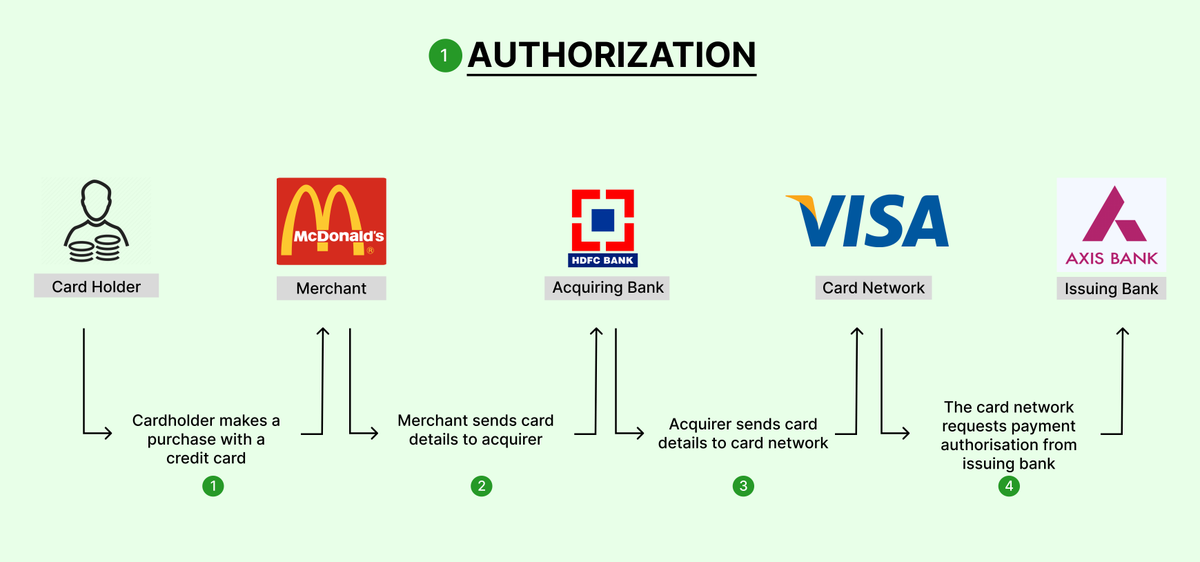
Authentication
5. The issuer validates the details and available limit, and if everything matches, it approves the transaction.
6. Network sends the confirmation to the acquirer, who in turn sends a confirmation to the merchant.
7. Customer gets a receipt to confirm the payment
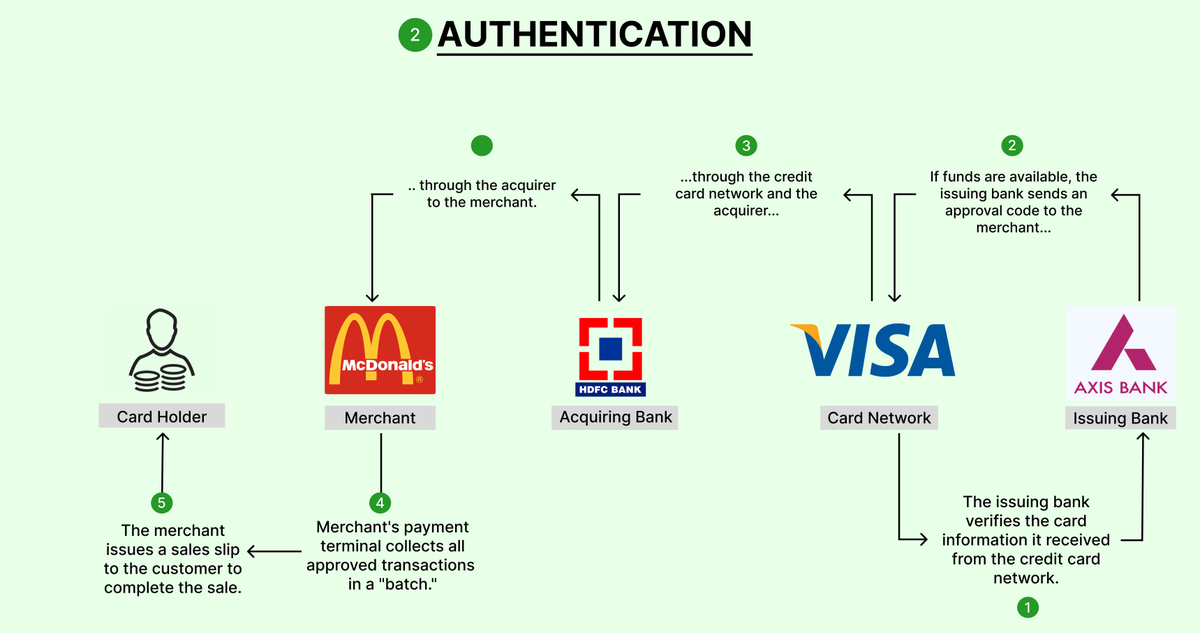
Settlement
8. At the end of the day, the merchant sends all transaction details to the acquiring bank.
9. Acquiring the bank asks the network to settle the transactions.
10. The network sends payment requests to the issuing bank.
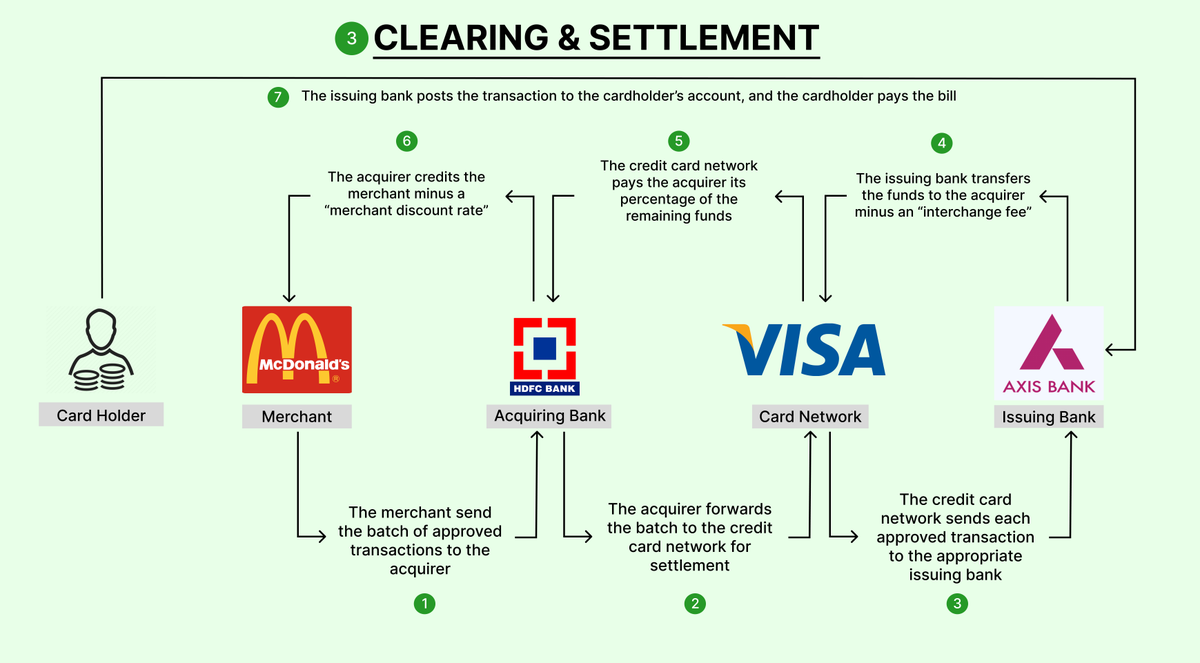
11. Issuing bank transfer funds minus interchange fee
12. Card network takes a cut and transfers funds to acquiring bank
13. Acquiring bank transfers funds to merchant-merchant discount rate (MDR).
Merchants pay this MDR to receive credit card payments which increase sales, and they don’t have to give credit to customers. The bulk of this MDR would go to the issuer since they are providing free credit and taking the risk of customer default.
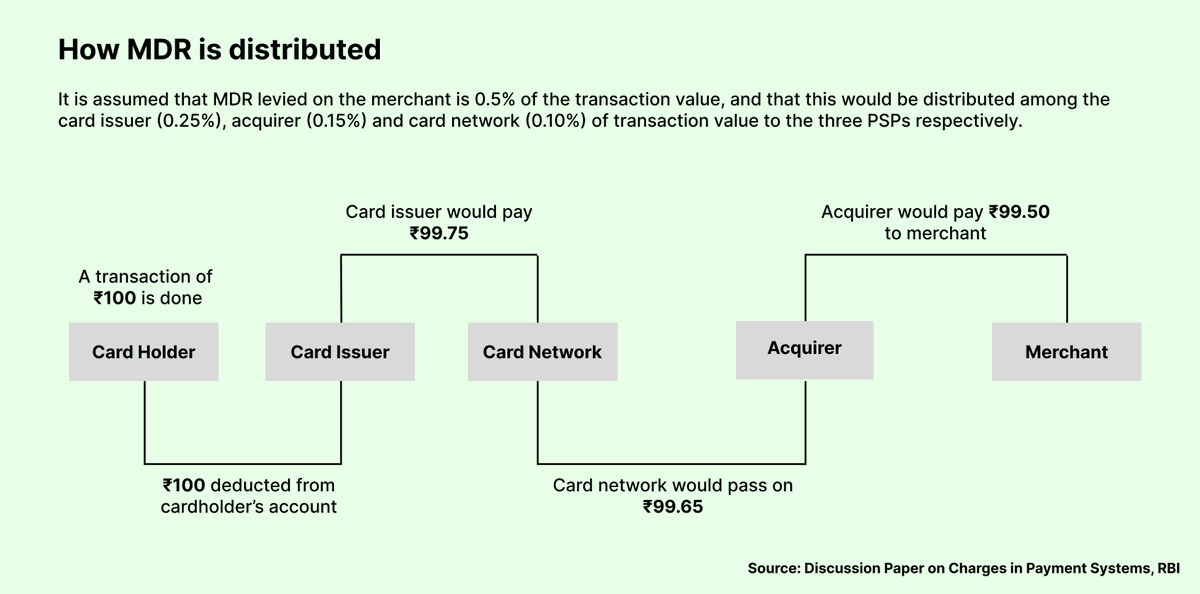
The acquiring bank for its own services and Visa will also charge a small fee for maintaining this network. Visa is like a toll collector where it charges a fee for transferring funds, similar to how we pay a toll for using roads which are used for maintaining the roads.
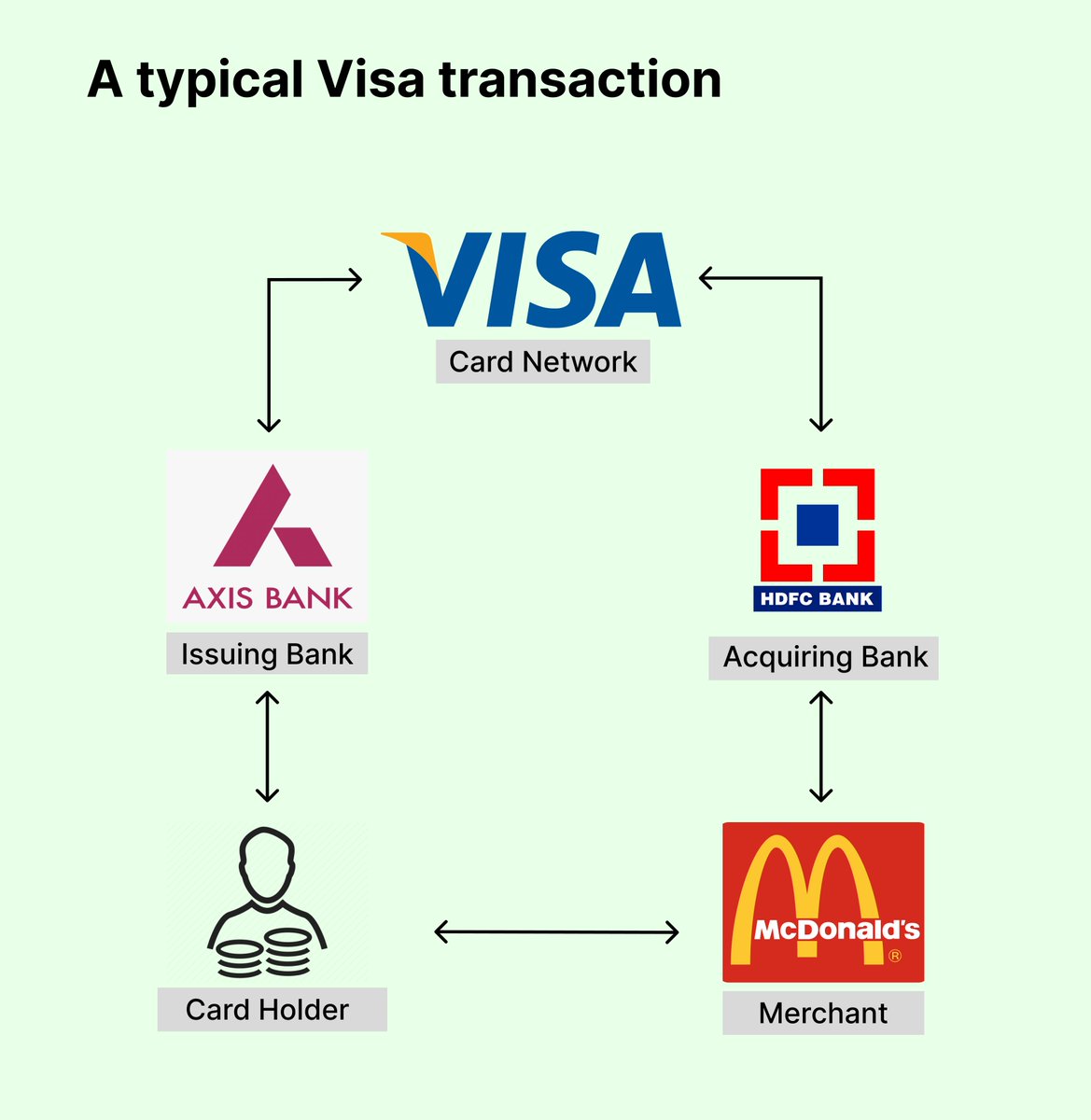
How is Amex different? The closed-loop system
As we saw, the biggest cut goes to the issuer, and that is Amex’s secret. American Express issues its own cards to customers. It acts as an issuing bank as well as a card network. This is known as a closed-loop system – where Amex controls each and every part of the transaction. It issues the cards, maintains the network, onboards each and every merchant individually and collects payments from cardholders.
This slows down the growth, and volumes are lower, but it gives Amex more control and a bigger role in the transaction. Visa/Mastercard work on an open loop system – they don’t issue their own cards. Any financial institution which is partnered with Visa can accept payment from Visa cards. You may have noticed that Amex cards are not accepted everywhere, and almost all merchants accept Visa cards. This open loop system is one of the main reasons.
How does this affect American Express revenues?
It earns from
– discount fees from merchants
– interest income
– annual card fees
– other fees (default penalties/forex/rewards)
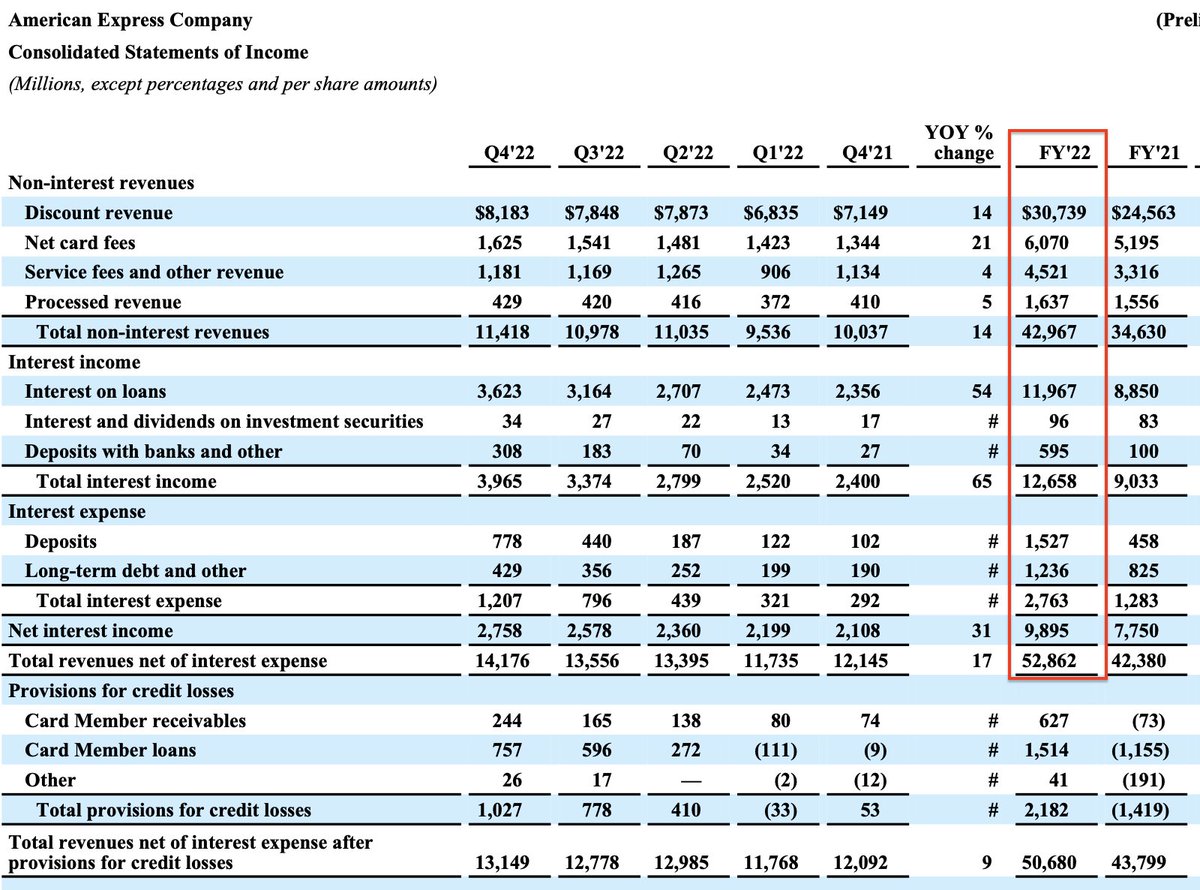
Discount revenue from merchants and interest income is the main differentiator. Visa and Mastercard can’t earn interest income since they are just networks and not issuers.
Have a look at Visa’s revenue sources.
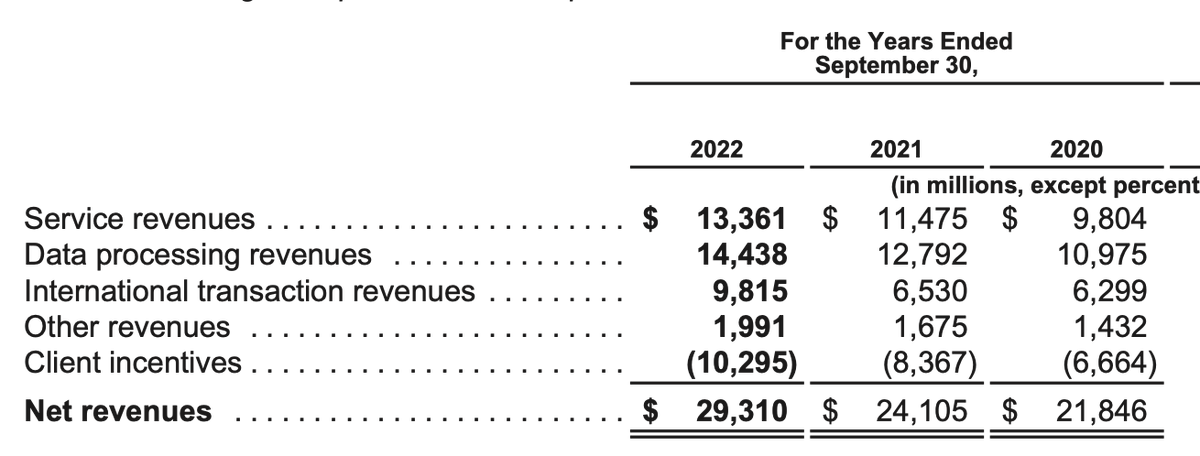
How does Amex earn so much from merchants?
While Amex earns from interest income, its real cash cow is merchant revenue (60%). Amex’s whole main strategy revolves around getting customers to spend on its cards. Amex earns substantial revenues from annual fees and high-spending cardholders. Amex invests these revenues in incentive programs and offers for customers. This leads to higher revenues for merchants and higher transactions. Compared to other card networks, it charges a higher MDR, but merchants are fine with it since they get access to a very premium customer base.
Amex prioritises merchants and builds many partnerships. One of its main partnerships is its co-branded card with Delta Airlines. Delta co-branded cards account for 9% of its global volumes and 21% of its loan portfolio.
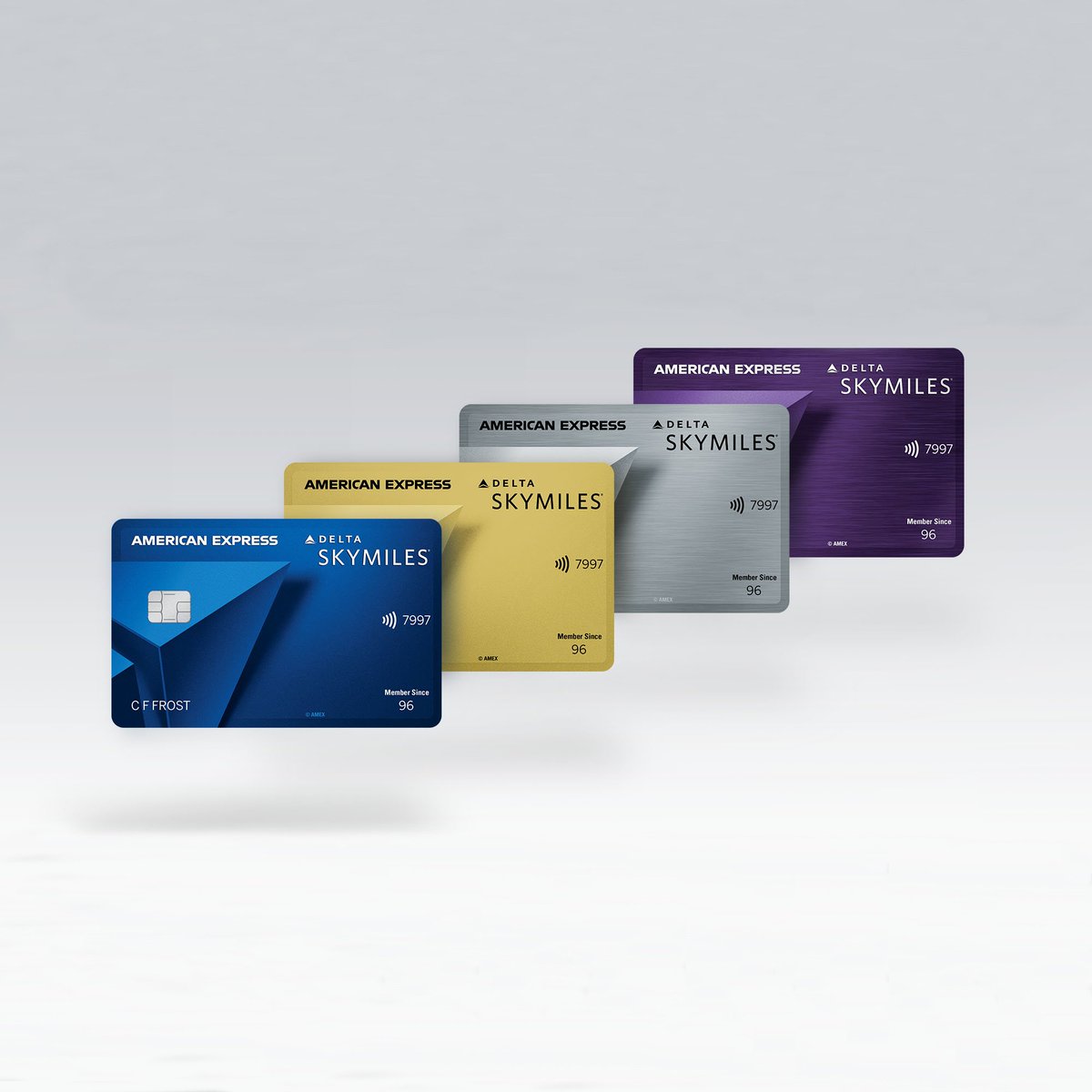
Conclusion
Amex’s closed loop system also has its disadvantages, like growing slowly compared to other card networks, but it ends up with more control over its merchants and a bigger take rate on each transaction.
My previous thread on how credit card companies make money.




